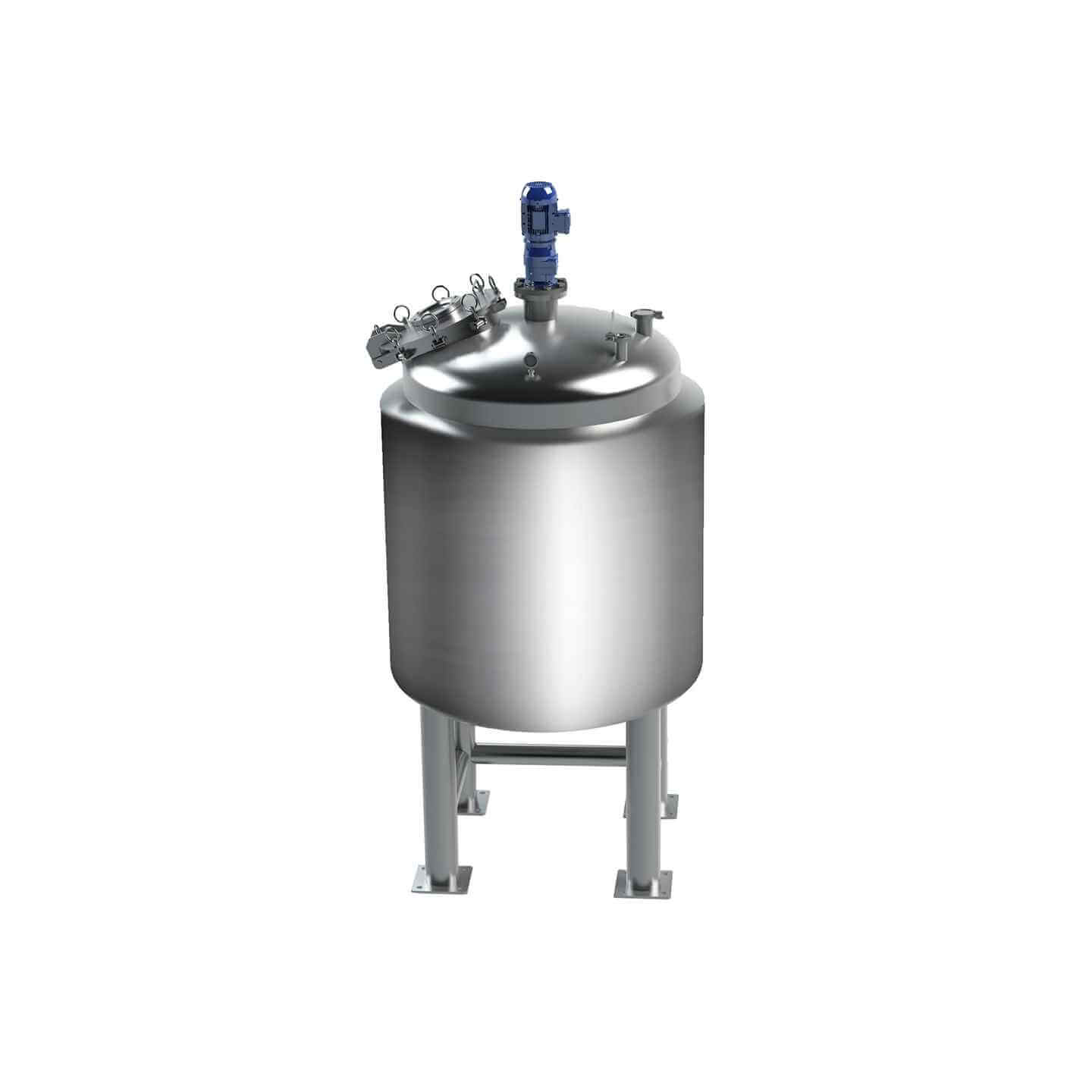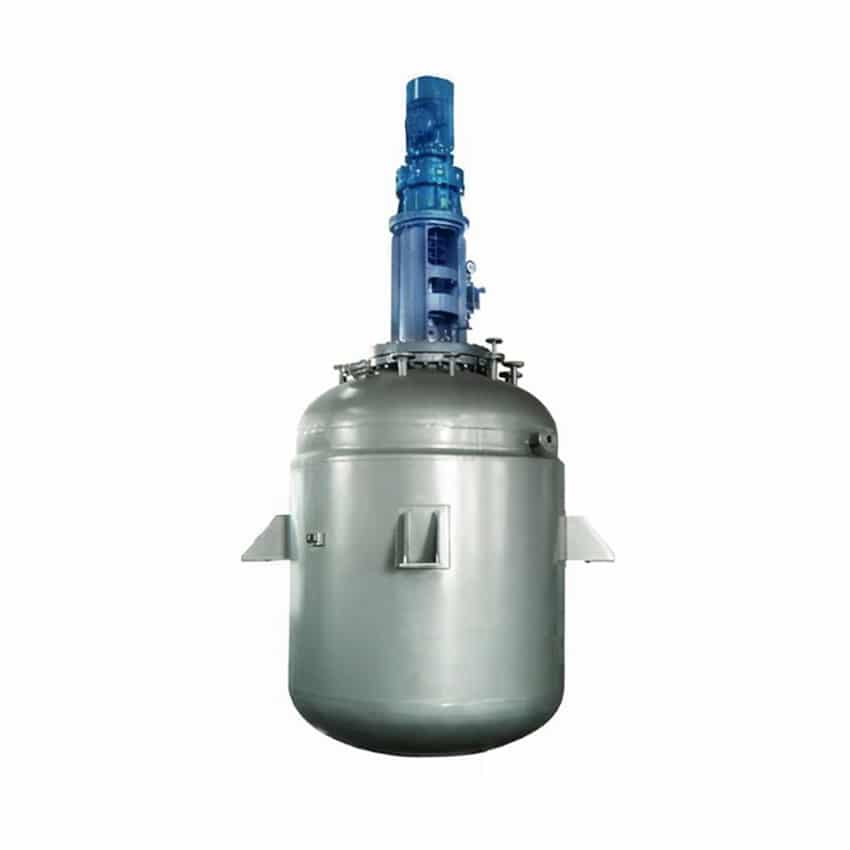

Jacketed Reactor
Jacketed reactor: used in the chemical industry, pharmaceutical industry and food industry, and other fields
Material
glass, stainless steel (316, 304), carbon steel, others
Capacity (L)
10-10000+
Mixing system
anchor, paddle, frame and others
Heating system
electric heating, oil heating and others
Jacketed reactors can be divided into steam heating reactors and heat transfer oil heating reactors according to different heating media, both of which are widely used in medicine, the chemical industry, plastics, rubber, building materials, food, and other industries. Corrosion, no environmental pollution, no need for automatic boiler heating, ease to use, and so on.
Request a quoteTo make a semi-circular tube jacketed reactor, the welding workload is much larger than that of a U-shaped or cylindrical jacketed reactor.
To meet the needs of the process reaction, the design and manufacture of the multi-spiral semicircular jacket reactor are more complicated. However, from the perspective of equipment use, management, and safety performance, the semi-circular tube jacketed reactor is superior to the U-shaped or cylindrical jacketed reactor. For example, the semi-circular tube jacketed reactor can greatly reduce the number of pressure vessels; increase the working pressure of the steam in the tube, which is beneficial to improve the heat transfer efficiency; it can make different heat transfer medium flow channels without “mixing” phenomenon; there are layers of grooves on the shape. , The application of sepiolite material insulation construction is easier than the jacketed reactor, the attachment is firmer, and the insulation effect is better.

The inner cylinder is divided into a semi-circular tube which is subjected to partial external pressure, and the semi-circular tube can prevent the inner cylinder from becoming unstable. From the overall point of view of the chemical reactor, each semi-circular tube jacket becomes the reinforcement ring of the chemical reactor cylinder. For the jacket body subject to the overall internal pressure, the jacket pressure of the U-type cylindrical jacket reactor should generally be less than or equal to 0.3MPa (if the jacket pressure is too high, the wall thickness of the cylinder body will become very thick), and the semi-circular pipe jacket can be compressed between 0.6 and 2.5MPa so that the quality of the heat transfer medium can be greatly improved during the reaction of non-heat-sensitive materials. Taking steam heat transfer as an example, a U-type cylindrical jacketed reactor is used, and the steam decompression is often controlled at 0.4MPa. In contrast to the use of a semi-circular tubular jacketed reactor, the vapor pressure can be 0.7-1.3 MPa, and there is no need to reduce pressure. If all saturated steam is used: 0.3MPa saturated steam temperature is 133.3℃, 1MPa saturated steam temperature is 179.9℃, the steam pressure is increased, and the heat transfer temperature difference is significantly increased. Because the semi-circular tube jacket greatly improves the stress of the inner cylinder, Therefore, when the required heat transfer is the same, the heat transfer area of the semicircular tube jacket reactor is corresponding smaller.

In the chemical production process, it is often encountered that the temperature rises and falls alternately in a reactor. This kind of working condition not only passes steam, but also uses freezing or cooling water, consumes a lot of energy, and often causes “mixing” accidents. To avoid this kind of accident, of course, the “potting kettle” operation can be taken, but this operation will increase the difficulty of the operation and occupy more plants and equipment. The ideal way is to use a double helix or multi-helix semicircular tubular jacket. There is no “mixing” phenomenon when steam, frozen brine, or other heat transfer medium are fed into each spiral jacket.
Helical semi-circular tube jacketed vessel with high heat transfer efficiency. When the pressure in the jacket is high, it is more suitable to use a semi-circular pipe jacketed vessel. The wall thickness of the semi-circular tube jacketed vessel is thinner than that of the traditional jacketed vessel, and it can withstand higher pressure, which can improve the heat transfer efficiency. In addition, the flow rate of the medium in the jacket can be increased, and the high-speed flowing medium can effectively prevent fouling on the surface of the helical semicircular tube jacketed reactor on the inner surface of the jacket. The helical semi-circular tube jacketed reactor has a reasonable structure, advanced technology, high energy, and low consumption, and is durable! The helical semicircular tube jacketed reactor is easy to use and easy to operate. It has been widely praised and praised by users!
The helical semicircular tube jacketed reactor is composed of a kettle body, a kettle cover, a jacket, a stirrer, a transmission device, a shaft sealing device, support, etc. The materials are generally carbon-manganese steel, stainless steel, zirconium, nickel-based (Hastelloy, Monel) alloys, and other composite materials; due to the different production processes and operating conditions of users, the stirring of the helical semi-circular tube jacket reactor generally has Anchor, paddle, turbine, pusher or frame. The outer wall of the jacket is welded with support, the support has two types of suspension or support, and the lower part of the pot body is provided with a discharge port.
Helical semi-circular tube jacketed reactors are widely used in petroleum, chemical, rubber, pesticide, dye, medicine, and food, to complete vulcanization, hydrogenation, alkylation, polymerization, condensation, etc.




